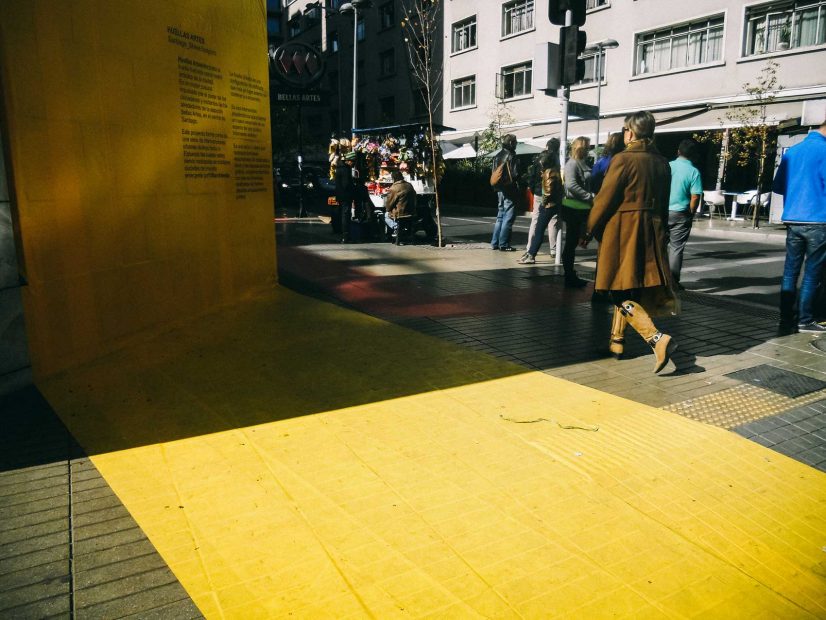
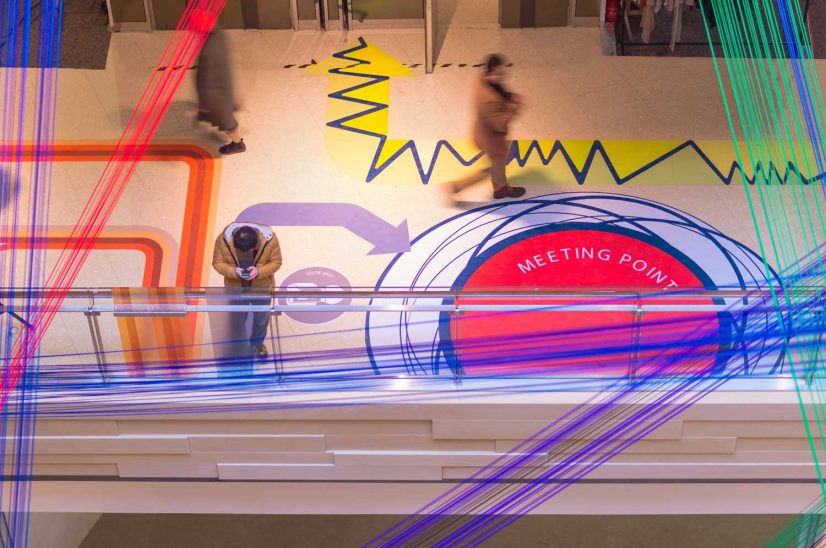
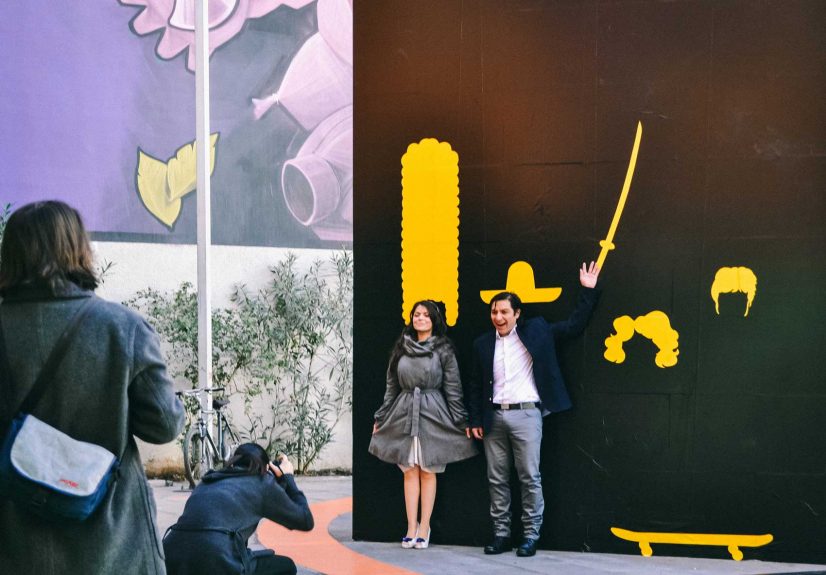
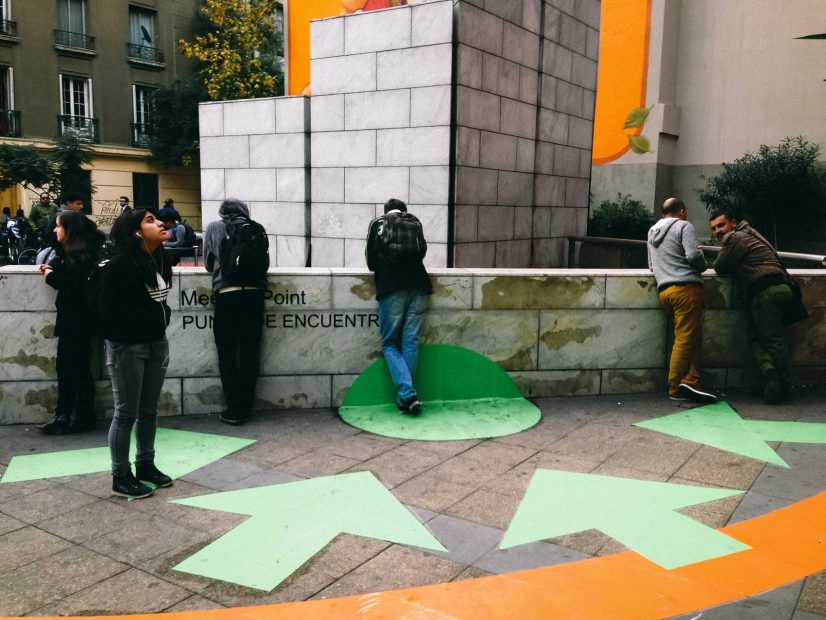
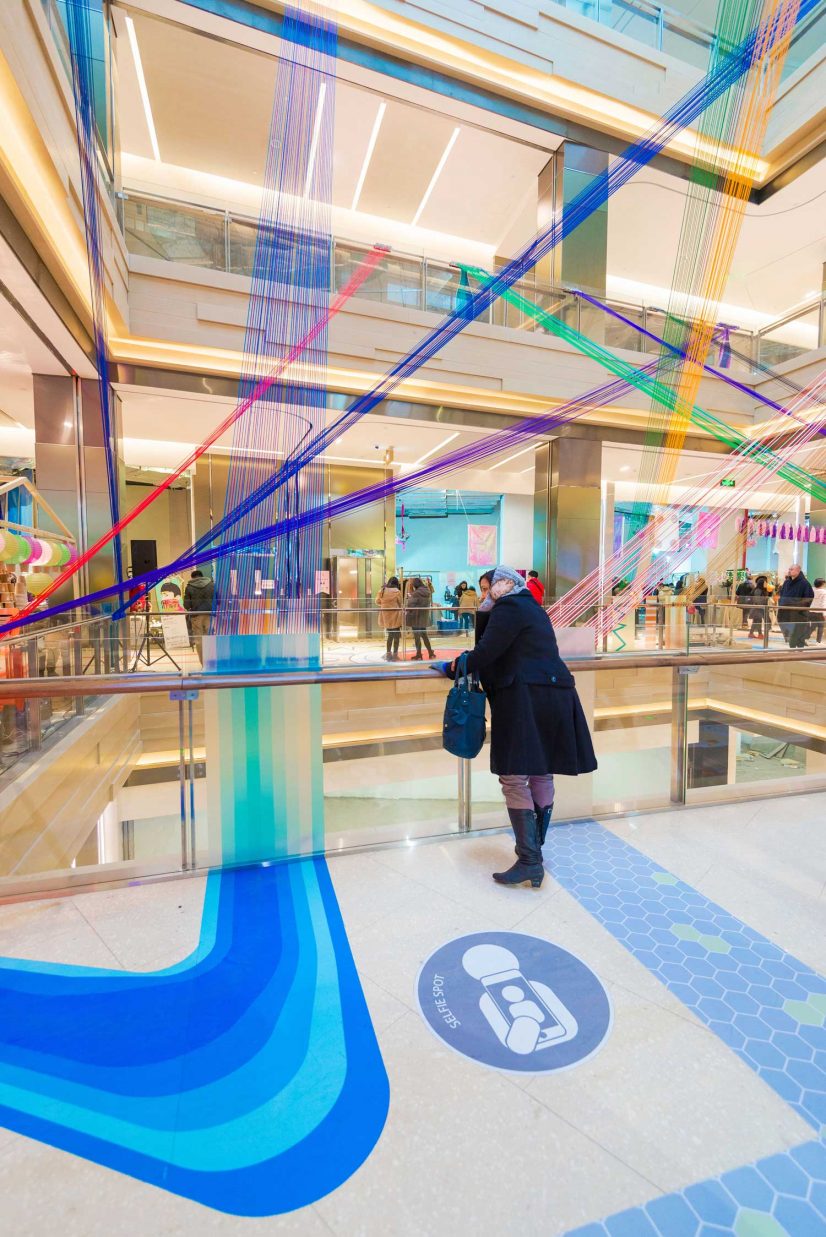
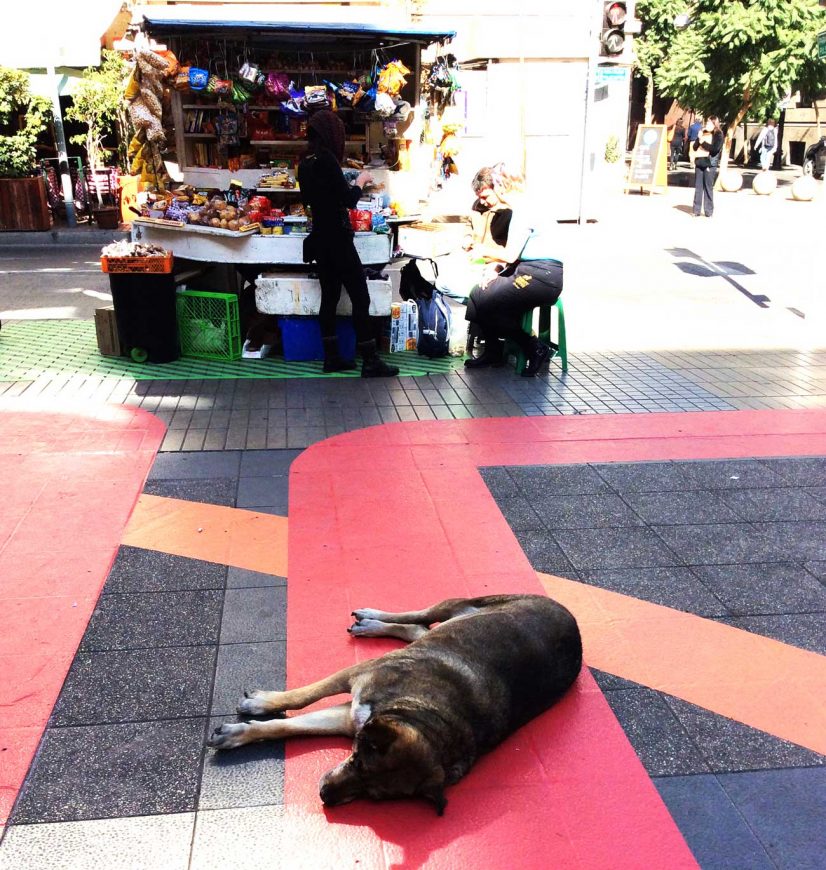
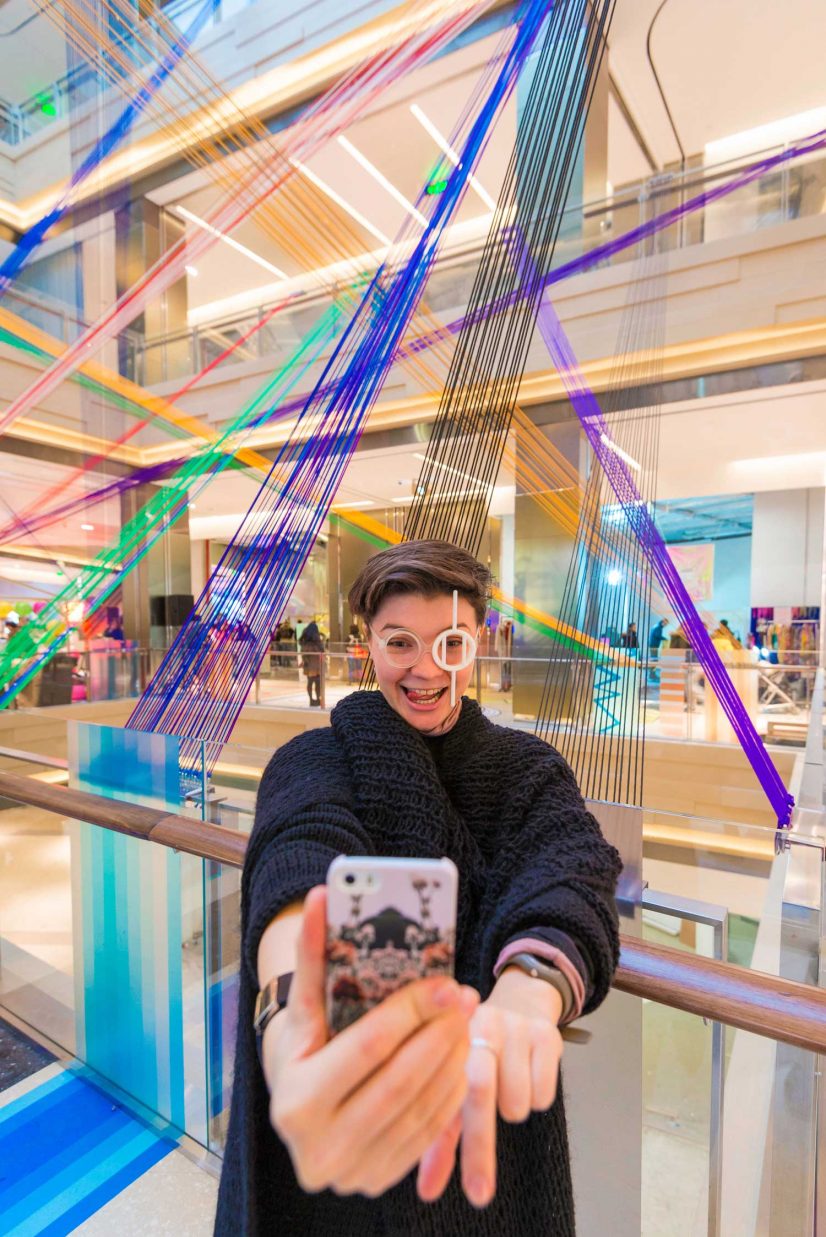
Manifesto
At 100architects, we believe that working in the Public Realm is a privilege. This is where our design has the biggest impact on the largest quantity of people.
We develop a singular vision: designing architectural objects that attract people and encourage social interactions in the urban public space.
We use a striking and eye-catching style that calls the attention of citizens, stimulating them and encouraging the occurrence of social dynamics.
Our design approach differs from traditional landscape architecture, which historically has been careful to blend with its context and its surrounding. Pretty much on the contrary, we strategically use a much more contrasting and controversial method while still creating tailor-made solutions that meet the needs of our project sites and surroundings.
Our projects in public spaces seek to stimulate the user by providing colorful landscapes and intricate topographies that allow users to interact in a much closer way with the objects and the space. With its appearance, morphology and impactful positioning, they invite users to jump, sit, lie down, eat, watch, take photos, talk, hug, laugh, upload, run, play, enjoy, and relax.
Pioneers of Hyper-stimulating Public Space
Public space has undergone almost no innovation in the last 100 years. Urban plazas, squares and urban spaces for entertainment have indeed gotten more sophisticated and adapted to the current trends and technology. However, these public spaces haven’t given an answer to the revolutions that the world is currently experiencing.
We believe that nowadays, it’s not enough by simply laying out trees, green areas, benches and nice lighting features in order to have a truly remarkable public space. Nowadays, the new generations are experience seekers, to the point that they prefer to invest in meaningful and memorable life experiences rather than in owning objects or products. Even kids today are not the same as we used to be; they are exposed and used to different kind of sensory stimulations. In that regard, we believe urban public spaces are lacking a form of recreation that meets those new needs of a generation that demands increasing stimulation and fantasy in their daily experiences.
New dynamics equals new opportunities
At 100architects, we don’t see our projects as problem-solvers, but rather as engines that bring out the best possibilities from a given space and act as catalysts for social and commercial opportunities. Our singular vision is to design architectural “objects” that attract people and encourage social interaction around them.
In order to aid place-making, urban interventions besides being eye-catching, pop and controversial, must also serve purposes focused on people’s health, happiness and wellbeing. And that’s exactly what we like to say, “we sell happiness”. Over time, our office has specialized in conceptualizing urban interventions that bring sparks of joy and entertainment to the citizens in the public realm through fantasy & surprise, two attributes we always implement in our proposals.
The fantasy & surprise factors are the ones responsible for boosting the imagination and creativity of the users, despite their age, surprising them with the unexpected when walking through a city, which is something we seek through our projects.
With these attributes we can create an engaging link with the audience and the citizens. Once that link has been created, our projects are just pure platforms for the community to colonize – not only by enjoying the spaces, but most importantly, by enjoying the social interactions that those spaces encourage through their morphology. The ultimate purpose of those spaces is to be used by the community – even in totally different ways that were not even planned by us at the studio.
The public realm, by attracting people, produces new dynamics and opportunities for flourishing neighborhoods, and in a world where technology, social media and online retail are replacing our natural meeting places, we believe that through our design we have the opportunity to explore ways of stimulating human interactions in the urban space. Because at the end of the day, human connectivity is the kind of connectivity that triggers wellbeing and happiness, productivity and innovation.
The attributes of our projects in urban environments
Besides the attributes typically known to impact positively in citizens’ health & wellbeing – such as openness, accessibility, walkability, free mobility, playability, shareability, social connectivity and perhaps a sense of belonging to your surrounding public realm – we usually measure the success of urban environments according to our own recipe for successful projects in the public realm.
We work within a framework of concepts and guidelines that we have developed over time in our practice. Some of those attributes are:
1_ CONTRAST: our projects seek to contrast with their context in order to emerge remarkable, iconic, colorful and eye-catching.
2_ AESTHETIC INDEPENDENCY: we design architectural objects with aesthetic independency, singular shapes that don’t mimic the surrounding.
3_ POP & CONTROVERSIAL: by designing simple shapes that can be understood at the first glance, our projects become “pop”. And by being disruptive in a known cityscape that belongs to everyone, they become “controversial”.
4_ INSTANT FUNCTIONS: all our projects are composed by instant functions, accessible, open and condensed doses of activities that provide a programmatic landscape within our projects.
5_FANTASY & SURPRISE: our projects seek to create immersive narrative experiences that can boost the imagination and creativity of the users, despite their age.
Play is not only for kids: The city of the future will be a playground for kids & adults alike.
So far, our civilization has understood our cities in a rather serious-minded and solemn way, and undoubtedly everything should be functional to the highest degree, but not everything requires to be so serious.
To our understanding, the concept of the playground has changed: Traditionally, playgrounds have been very isolated and protected places ONLY for kids to play, while parents wait outside.
At 100architects, we design playscapes for the city; urban spaces where the cityscape merges with the play area and engages with it creating spaces where the boundaries between the playscape and the rest of the cityscape is not clearly limited. Play is not only for kids; we all want to play in the city. The city is our playground.
Why playing in the city?
Having the idea of play as a core aspect of all our projects, we create environments that don’t only encourage people to learn in an engaging and relaxing way, but also create opportunities for physical exercise that was found to further enhance cognitive abilities, as well as physical health overall.
The concept of “Playful learning” takes place in what is called “playful learning environments”. This type of learning has been found to be very effective because apart from promoting a state of low anxiety, it provides opportunities for completely new experiences and active engagement. It allows kids and adults to learn from peers, parents or friends, building skills of communication and collaboration in a fun and entertaining way.
In addition, the colors and shapes chosen for all our projects create vibrant environments and instill a sense of joy, attracting people to engage in all sorts of activities. As a result, performing activities in such environments allows people’s dopamine levels to increase, enhancing creative thinking skills. At the same time, the colors and shapes tap on people’s imagination, another factor that paves the way for creative thinking development.
Urban regeneration approach
By 2050, 2/3 of the world’s population will be living in cities, so through our projects we seek to enhance the sense of community to get people to love & respect their immediate environments and public spaces, as a small contribution towards getting to love & respect the Earth, and achieve a swift from degradation to regeneration.
Regenerative development is not developing more buildings, but developing new potentials, through education and the enhancement of empathy, wellbeing and the improvement of health in urban environments.
Written, designed and developed by 100.


 Home
Home
 Projects
Projects
 Moments
Moments
 Products
Products
 About
About
